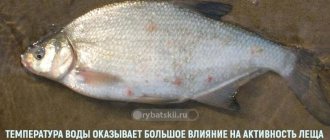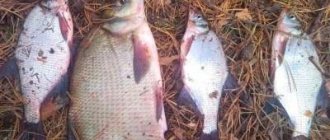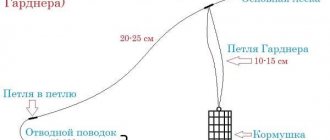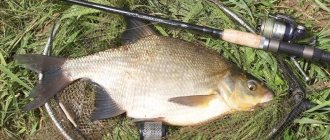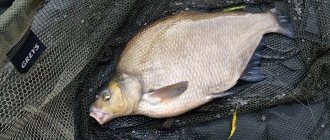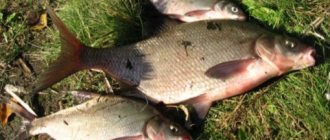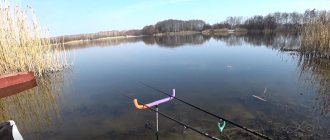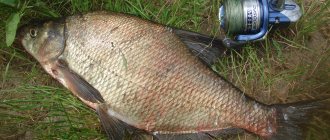☸ Preparing for fishing
Before going to a river or lake, it is necessary to inspect fishing rods and all fishing accessories: landing net, cage, supplies, and so on. Surely there was no time for that in the fall and something was left broken or torn. The greatest attention should be paid to equipment - make new ones, check old ones, remake them if necessary. Those who are exclusively interested in summer fishing do this work in the winter, while away the long, boring evenings.
Sports fishermen usually do this to save time at the start of the season. For amateurs, this approach is not always justified, since most of them do not really know what conditions they will face. Of course, you can prepare thoroughly by making many different rigs. As they say, for all occasions. However, this process is quite labor-intensive, and will they all be needed? Or at least half? Most likely no.
It would be wiser to take last year’s equipment, which has already proven itself in action, and replace only the fishing line in them. You shouldn’t skimp on fishing line, especially since it’s not that expensive, otherwise a break after hooking or biting a trophy fish will cause not only material damage, but also moral damage. Even with absolute confidence that the old fishing line has not lost its strength over the winter, dismantling will still have to be carried out. Namely, tie up the hook and the connection to the rod.
An even better option is to purchase everything you need at the store and make the equipment directly on the pond. Home preparation can be disappointing if it does not meet the fishing conditions, while on the shore it is possible to assemble the structure that is needed here and now.
☸ Features of spring fishing with float tackle
It must be said right away that due to the spawning of most species (both peaceful and predatory), it is prohibited almost everywhere to go out on the water on watercraft, be it a large boat or a raft made of logs. And since it is often difficult to approach the shores due to the spill, you will need fishing overalls or at least waders.
A float fishing rod is relevant already in early spring, when rivers and lakes are freed from ice cover. In small bodies of water, the water warms up faster, so the fish in them are active earlier. However, even in clean and warm water the spring bite is characterized as unstable. The weather is to blame: the sun sometimes shines, sometimes hides behind the clouds, even on a clear day it can rain for no reason, the direction of the wind constantly changes, and the atmospheric pressure fluctuates. All this greatly influences the behavior of underwater inhabitants. On unfamiliar bodies of water the problem doubles. If it doesn’t bite, the fisherman begins to be tormented by doubts: to look for fish or wait for it to approach, whether it is there at all or not, to continue fishing or to get ready to go home.
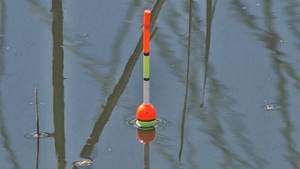
Feeder fishing on the river in spring
Fishing with a feeder in the spring is very popular because rivers overflowing their banks prevent fishermen from reaching a promising fishing spot with a float rod. And strong currents on rivers play a significant role, so the advantages of using feeder equipment are obvious.
A big advantage of feeder fishing is the ability to leave the rod on the stand and go to the tent to warm up or just sit down and drink tea, since it is very cold in early spring. While the fisherman is warming up, the feeder lies on the bottom and waits for a bite.
Experienced fishermen like to joke that in the spring it is not the fish who are looking for bait, but the fisherman who is looking for fish. And there is some truth in this, here the feeder gets another advantage - mobility, you can quickly change the place of fishing.
During the first feeding, it is best to use crumbly bait, and give it a little, 5-8 feeders will be more than enough. Well, while fishing you need to make one of the five casts, filling the feeder with dense bait.
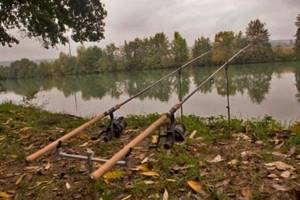
If you are fishing in a fast current, pay special attention to the angle between the rod and the line, because the smaller it is, the more pressure the line will experience. If you plan to fish with a feeder in the spring on a river without a current, then the choice of angle does not matter.
The diameter and length of the leash of the feeder equipment greatly influences the number of bites. It is often recommended to use leashes made of fishing line with a diameter of 0.12 to 0.18 mm. and a length of about 30 -90 cm. But you can choose the optimal length and thickness only based on the experience of previous fishing trips in the chosen fishing location. But no one forbids experimenting, for example, if there are bites but you can’t realize them, then you should increase the length of the leash.
The main difference between feeder fishing and classic donkey fishing is the frequency of casting; when fishing with a feeder, this is done much more often. You can re-throw the tackle if you don’t see any bites within 10 minutes. But there are exceptions; this does not apply to catching cautious fish, such as tench, carp or bream.
It’s quite easy to notice a bite – the tip of the rod begins to change its angle. By the way, almost every type of fish bites in its own way. In my practice, it happened that the rod flew out of the stand, but instead of a large bream, I had to fish for a medium-sized bream.
In order to hook a fish, you just need to slowly remove the rod from the stand and move it behind your back or to the side with a smooth movement, about a meter. There is no need to jerk sharply and wave the rod like crazy, otherwise you risk losing the fish. Fishing also needs to be done carefully and quietly.
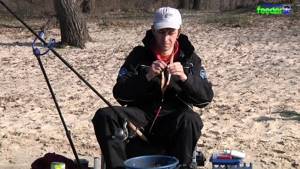
☸ Where to fish?
Where will there be a greater chance of success? In early spring you can find excellent fishing in warm shallow waters. Fish are attracted here by warmth, better oxygen conditions and the availability of food. Secluded bays protected from the winds, strewn with snags and islands of last year's dry grass, should be considered promising. Fishing in floodplain meadows flooded by floods can be very effective. The depth in such places is shallow, the water warms up well, and the soil is full of bugs, worms and other living creatures.
As the temperature rises, the first aquatic vegetation begins to emerge, and underwater inhabitants move closer to the reed thickets and various grassy carpets. Such places are gradually overgrown, allowing you to catch in windows. Since they are located close to the shore, the depth here rarely exceeds 1.5 meters. Sometimes a school of crucian carp or roach can be seen with the naked eye; all that remains is to carefully approach and cast the fishing rod. Also, the presence of fish can be determined by the characteristic splashes and swaying of the stems.
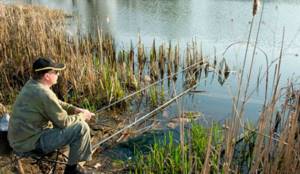
In the spring, you shouldn’t rush to change the place if the pecking suddenly stops. An abrupt cessation of biting does not mean that the fish has left and needs to be looked for again. It is possible that its activity was affected by a change in wind direction or a cloud covering the sun. It is enough to wait out this trouble, and everything will return to normal.
In cold water, the fish does not shine with agility; it can fiddle with the bait for a long time, not daring to swallow it. Therefore, you should not rush to hook, because in 9 out of 10 cases, premature hooking turns out to be ineffective, it is better to be patient a little and wait for a more confident bite. Fishermen have noticed that at the beginning of the season, evening fishing is often more effective than morning fishing, and all because the water warms up during the day and in the evening underwater inhabitants behave much more boldly.
Fishing in the Astrakhan region (Akhtuba River, Selitrennoye village)
⌚ — 6 minutes 44 seconds
FISHING in early spring. First trip to the pond.
⌚ — 5 minutes 6 seconds
Rubber band fishing on the Don 2020-2021, fishing for crucian carp, bream, pike perch, fish!!! FISHING WITH RUBBER IN SPRING
⌚ — 6 minutes 8 seconds
It's hot during winter fishing, Chukotka in the spring. #Shorts Ice fishing on the Anadyr Estuary
⌚ — 52 seconds
FISHING FOR SEMONA SCALTER AND GRINDERLESS. CATCHING RACHE IN WINTER.
⌚ — 29 minutes 48 seconds
FISHING FOR PIKE AND PERCH IN SPRING. LURE. SPINNING FISHING
⌚ — 1 hour 59 minutes 54 seconds
Fishing in early spring | Fishing for pike and perch using a spinning rod | Microjig saved fishing
⌚ — 15 minutes 40 seconds
To everyone who is waiting for Spring! Memories of Fishing in Early Spring. Fishing Overnight. Feeder. Drut. ARCHIVE.
⌚ — 12 minutes 28 seconds
FISHING WITH SPINNING AND WOBBLER. (VIDEO WITHOUT FISH). FISHING WITH LINE.
⌚ — 30 minutes 14 seconds
Fishing with a float in the spring
⌚ — 17 minutes 59 seconds
Fishing bait and baits
⌚ — 1 minute 2 seconds
FISHING WITH A MOTHELESS IN THE DEEP WINTER. WHAT YOU CAN CATCH IN AN HOUR FISHING IN EARLY FEBRUARY.
⌚ — 30 minutes 56 seconds
I'LL POUR INTO THE HOLE! SO HORRIBLE FOR FISHING! ALL THE FISH ARE BITING!
⌚ — 1 minute 16 seconds
SPRING IN THE MIDDLE OF WINTER! WINTER FISHING 2021
⌚ — 22 minutes 19 seconds
Hunting with a slingshot in early spring (ARCHIVE)SLINGSHOT FISHING
⌚ — 21 minutes 39 seconds
DO-IT-OWN BITE ALARM IN 2 MINUTES. fishing 2021, fishing in spring
⌚ — 8 minutes 4 seconds
Fishing - Winter is like spring... and I want summer.
⌚ — 5 minutes 20 seconds
FISHING on PINEGA. There is FISH, you have to look for it. FISHING in FEBRUARY. THE ROCH TAKES IT IN THE THREATH.
⌚ — 19 minutes 33 seconds
Tags:
By dates: 02/15/2021 - 02/16/2021 - 02/17/2021
Commented video:
WHO ARE THE Adygs? ADYGEANS
⇒ “class” View in full... Added - 02.16.2021
A girl saved a dog from icy water
⇒ “He has such a soul. You can’t help it. Look, all the men are more callous than women, If it helps, I decided to help the girl, then It seems like it’s not for nothing, but he fell in love, they themselves don’t believe that they can help out of compassion and a sense of justice in the soul. Men are different, well..." View in full... Added - 02/16/2021
Is this a knife
⇒ "Excellent" See in full ... Added - 02/16/2021
Cat breeds for children.
Educational video. Let's get to know the World. ⇒ “cool” Watch in full... Added - 02/16/2021
Saitama AMV
⇒ "cool clip" Watch in full... Added - 02/16/2021
Betmate roulette gameplay
⇒ "eu inca nou inteleg cum trebuie de o jucat" Watch in full... Added - 02/16/2021
☸ Spring float tackle
You don’t have to buy a fishing rod at a fishing store. This could be a bamboo or hazel stick with a thin flexible tip, although of course it is much more convenient to fish with a light telescope. Its length is usually 5-6 meters, and the fishing line is about half a meter longer. Taking into account the depth, the maximum casting range of a regular fly rod is 9-10 meters, which is quite enough for fishing in the coastal zone. You can cast further with a match or Bolognese tackle that has a reel and a certain supply of fishing line, but working with such a tool will require certain skills.
In spring, the fish are extremely cautious and very shy, so it is advisable to use delicate equipment. It is better to catch even sluggish spring carp with a fishing line no thicker than 0.25 mm, a light float and appropriate weight. The hook for fishing in cold water should be 1-2 numbers smaller than in summer. The same carp in most reservoirs is not interested in boilies and corn until mid-May. At the very beginning of spring it is caught using bloodworms, which are quite problematic to attach to a large hook.
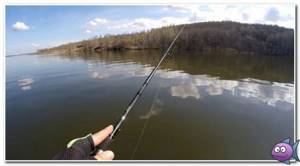
Fans of constant movement and searching for catchy spots should opt for a telescopic rod. Such tackle quickly folds up and is just as quickly ready in a new place.
Fishing with a float in the spring
Fishing with a float rod begins as soon as the reservoir is free of ice. And the more the water warms up, the more active the peaceful fish bite becomes. First of all, you should look for it at the mouths of rivers, streams, in small, well-warmed areas where the sun's rays illuminate the reservoir all day.
In cold water, carp fish respond better to animal baits, and as the water warms up, you can switch to “flour” baits: dough, cereals, cake, etc. In early spring, it is better to use maggots, large bloodworms or California worms. Particular attention, however, as always in float fishing, should be paid to bait. I think everyone is familiar with the equipment of a float fishing rod from childhood; there is no need to describe it in this article. Better take a look and get into the spring mood by catching dace on the river. Tulke.
☸What kind of fish can you catch?
What kind of fish can you catch in the spring with a float rod? I love it. The main thing is to know the places of spring deployment and the taste preferences of a particular species. At this time of year, the main targets of floaters are roach, rudd, crucian carp and other peaceful representatives of the ichthyofauna. Fishermen without ambitions are happy to compete in dexterity and dexterity with a nimble bleak. Let's start with it.
☸ Bleak
A stable bite for this small but tasty fish begins in mid-April. At this time, it comes close to the shore, so you can even reach it with a 3-meter rod. In general, the tackle should be as delicate as possible, equipped with a thin fishing line, a miniature float weighing no more than 1 gram, an appropriate weight and a small hook. When fishing in a current, several pellet weights are used, spaced along the line from the float to the hook.
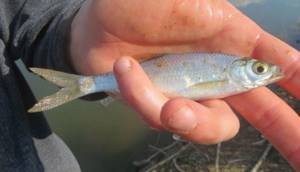
The bleak's favorite treat is maggots, white or tinted with food coloring. She will not refuse a sandwich consisting of maggots and bloodworms. From the end of April you can switch to semolina and dough. This ever-hungry fish responds well to complementary feeding. To attract and retain a flock, it is enough to periodically throw a handful of pre-moistened breadcrumbs into the water.
☸ Roach
Roach is one of the first to become active after freeze-up, but it is not easy to catch because it is constantly moving. Of course, because almost all predators hunt for her. It can only be found in places with a lot of last year's vegetation and snags. For her, this is both a reliable shelter and a dining room at the same time. The color of the bottom surface is also of no small importance for this fish. In areas with a sandy bottom, the roach stands out too much and is noticeable from afar, so it avoids them.
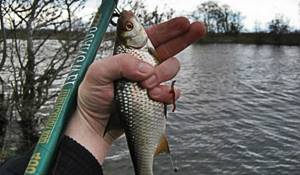
In the spring, various small animals serve as bait for roach fishing: bloodworms, maggots, worms. When fishing from the bottom, experienced fishermen advise attaching a foam ball to them so that the hook with bait does not go into the soft ground. It is not only possible, but also necessary to feed roaches in the spring, and with abundant starting feeding. The only requirement for the bait mixture is a dark shade, otherwise the light spot on the bottom will not attract, but will scare away the fish.
☸ Rudd
Catching rudd with a float rod in the spring from the shore is a specific activity. Success in it largely depends on how quietly the fisherman approaches his prey. The bait must be silently thrown out the window among the grass, preferably under the opposite edge, and then smoothly pulled towards you. If the fished object is in this place, and it was not scared at the time of approach, the bite will occur immediately.
The rudd is a strong fighter; in this regard, the roach is far from it. Fighting for life, it is able to drag the hook into dense vegetation, from where it is impossible to pull out the equipment without breaking. Therefore, the fishing line should be of high quality and strong, possibly thicker (main – 0.2 mm, leader – 0.15 mm). If you take colored monofilament and match it to the general background, the thickness will not affect the number of bites in any way.
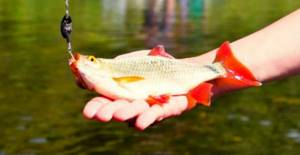
At the beginning of the season, this fish prefers animal baits; in warm weather it can be caught well on dough. Store-bought bait for cold water or a homemade mixture will help to collect it in one place or “put it on point,” as athletes say. For example, crushed cake mixed with breadcrumbs and wheat flour. The addition of animal components is mandatory.
☸ Crucian carp
Spring fishing for crucian carp with a float rod also has its own characteristics, and they are associated primarily with weather conditions. It's hard to guess when he'll start biting. If the spring is warm, the bite can begin as early as March, and after a long winter, the silver beauties take a long time to recover. Therefore, it is better for avid crucian fishermen to be patient and not rush to the reservoirs, so as not to get upset. Effective trips are possible when the water warms up to 7-10 degrees and not earlier.
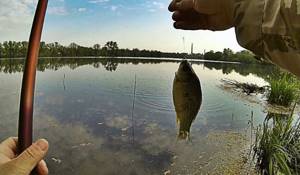
Crucian carp can be found near plant thickets bordering clean water. They move here before spawning, and this is where they will lay their eggs. During this period, they restore strength after winter and actively prepare for spawning, therefore they feed exclusively on animal food containing large amounts of protein. Although on some lakes, anglers successfully catch spring crucian carp using float gear using batter and various baits.
☸ Lin
It’s hard to believe, but the heat-loving tench has been active since mid-spring. You can find it in shallow bays. It would seem that it can be found at a depth of up to a meter except for small roach. But if in such places you look closely at the water surface, you will notice tracks of tiny bubbles confirming the presence of tench. And if he digs the ground, that means he can feed and be caught. The best tackle for such fishing would be a fly rod, which, when cast correctly, does not create noise and does not frighten the fish.

Tench is considered an omnivore, but in spring, especially early, its diet mainly consists of invertebrates. During this period, he should be offered tinted maggots or dung worms, and when it gets a little warmer, you can try fishing with decoy. What to feed tench? Many fishermen claim that he willingly goes for a mixture that contains cottage cheese. Others add crushed snails - a more familiar delicacy for him. Be that as it may, bait should be selected individually for each individual reservoir.
☸ Carp
For carp fishing in the spring, any type of float tackle is suitable, both with and without a reel. If the carp comes close to the shore, then there is no need to use a Bolognese or match fishing rod; you can get by with a regular fly rod. As a rule, it consists of a long, strong fishing rod, monofilament 0.25-0.3 mm, a float with a carrying capacity of 3 to 8 g, a leash of 0.18-0.2 mm and a hook of a suitable size.

Carp loves warmth. In early spring, while the water is still cold, it behaves passively and sluggishly, but as the weather warms up, carp fishing becomes more and more interesting. It is caught with a fishing rod in quiet bays and creeks at a depth of up to 2 meters. Like other fish at the beginning of the season, it tries to replenish its energy reserves with the help of animal food rich in protein. You can effectively catch it using maggots, dung or earthworms, crustaceans and mollusks. Towards the end of spring, carp anglers switch to boiled potatoes, canned corn and other vegetable baits. It is best to feed this gourmet with a mixture consisting of plant and animal ingredients. It may, for example, include corn grits, sunflower cake, bloodworms, as well as some coastal soil for color and a combination of components.
End of spring - May
May is the period of spawning and prohibition. Fishing at this time is more of a sporting nature. You must not break laws, fish in permitted places, with permitted gear, and most importantly, protect nature!
Feeder on the Shatura Lakes in May
Mikhail Krupinov, a well-known host of many videos about feeders, opens the fishing season early in the spring. Most often in May the weather is the most suitable for fishing; the fish were not active that day, but Mikhail caught his spring bream.
Feederist in May on the lakes
It is interesting that on this day the bite throughout the entire reservoir was very weak, or rather there was almost none. But Mikhail, with the help of dips (walnut, plum, etc.), got several good bream to sit on the hook.
Video of spring fishing on the Upa River
Another river in central Russia. The small river Upa 80 km before its confluence with the Oka (between Odoev and Krapivnaya). The water temperature at this time was already about 15 degrees. And you could count on catching not only roach and silver bream, but also decent bream.
The composition of the feeder bait for May is a mixture of 3 packages of Aquamaster “Bream”, “Roach” and “Feeder”.
Additive : millet and pea porridge.
Aroma - Suneli hops and molasses added to water.
River fishing in spring on video
Fishing on the Volga in Chuvashia
At the end of May, Alexey Fadeev tries his luck as a fisherman on the Volga. Most of the fish have already spawned and are resting after spawning. So you can’t count on a good bite. It will be all the more interesting to watch on video how a sports fisherman finds an approach to the fish.
Despite the fact that it is already quite warm, Alexey advises not to use the nutrient mixture. It is better to take fine-grained bait for cold water. As always, Fadeev recommends Dunaev mixtures.
Alexey Fadeev on the Volga in spring
In the spring, you should expect the fish to be closer to shore, where the water is warmer. For the most part this is true. But the author of the video believes that “good” spring bream still stands at depth. The feeding point in this place of the Volga is 40m from the shore.
